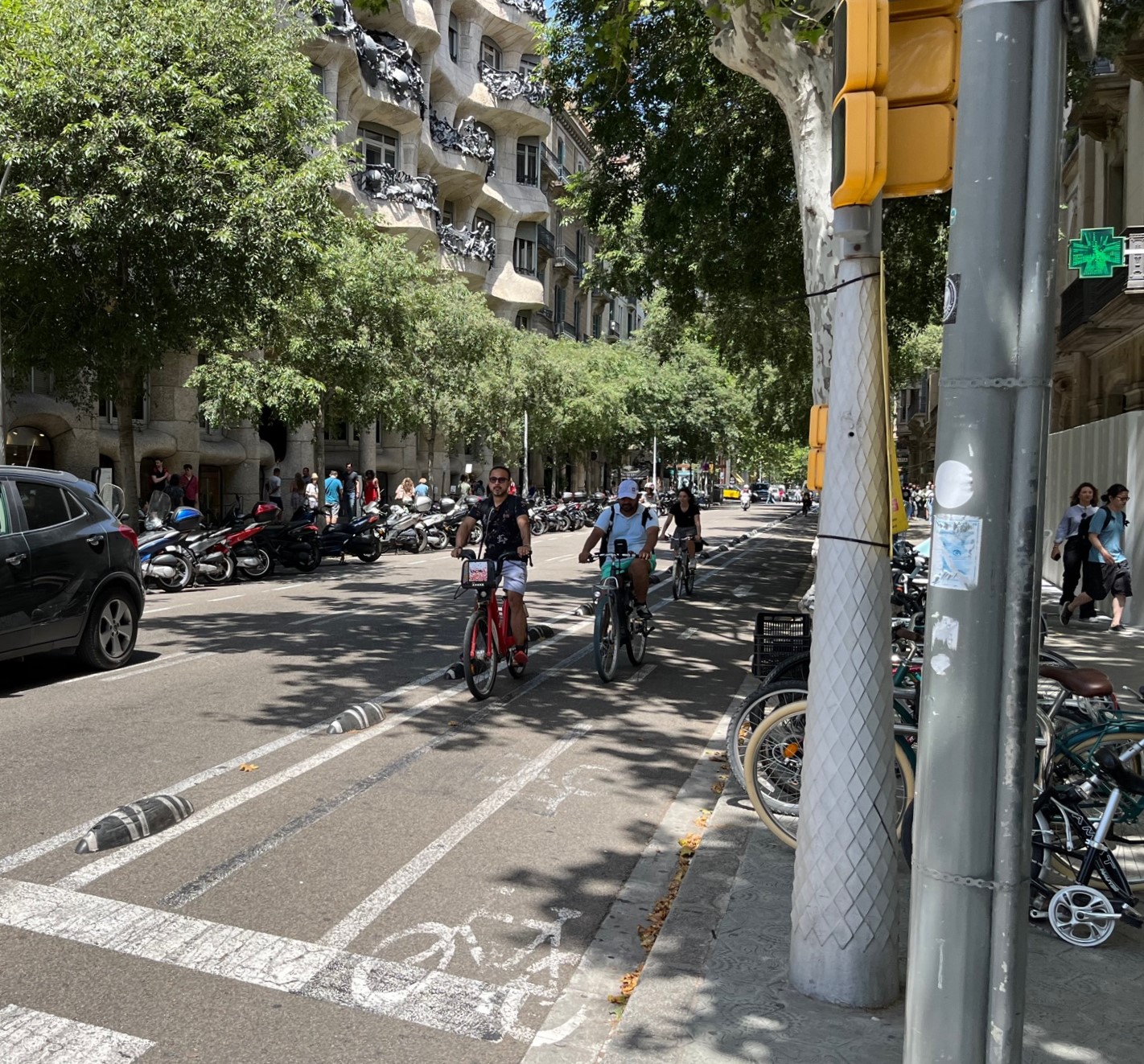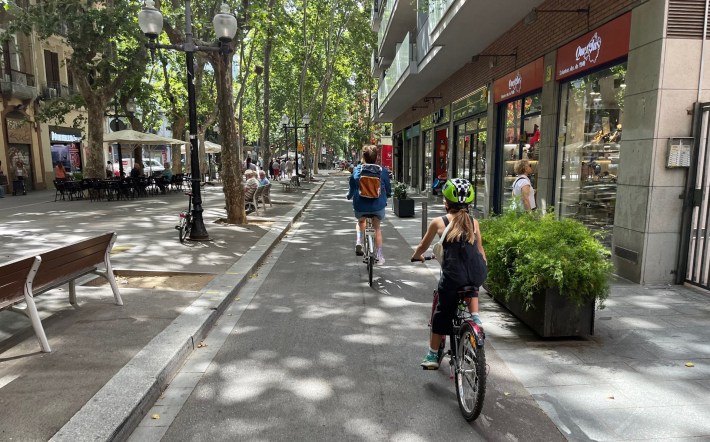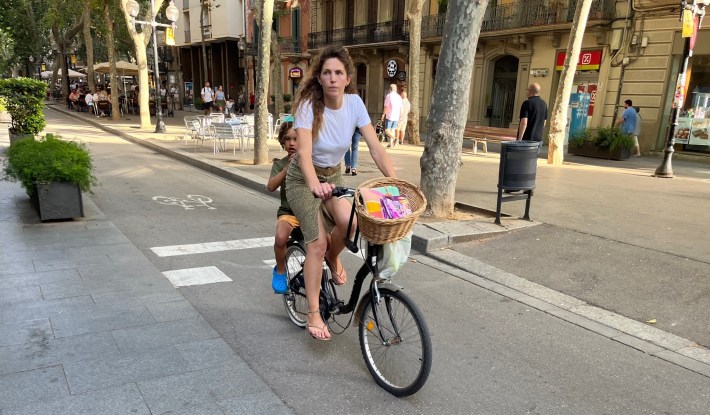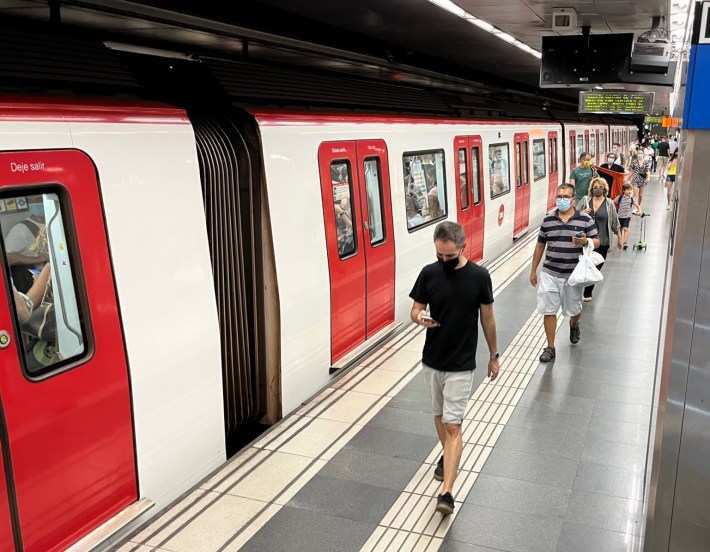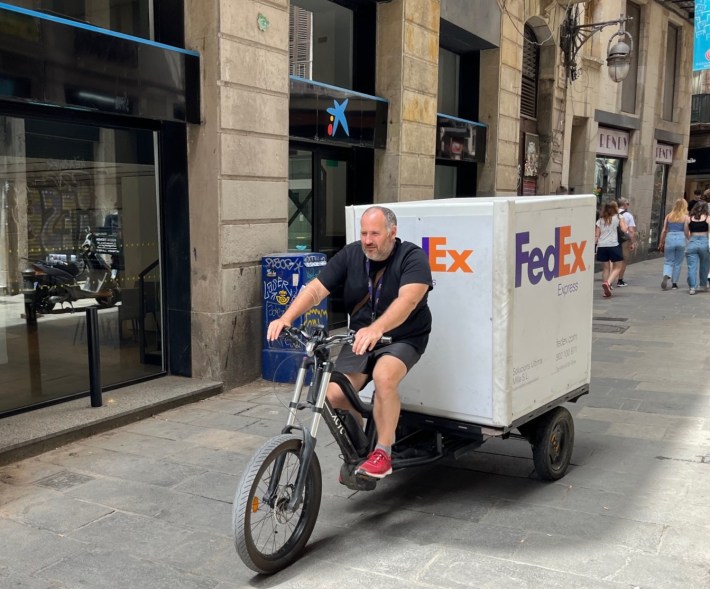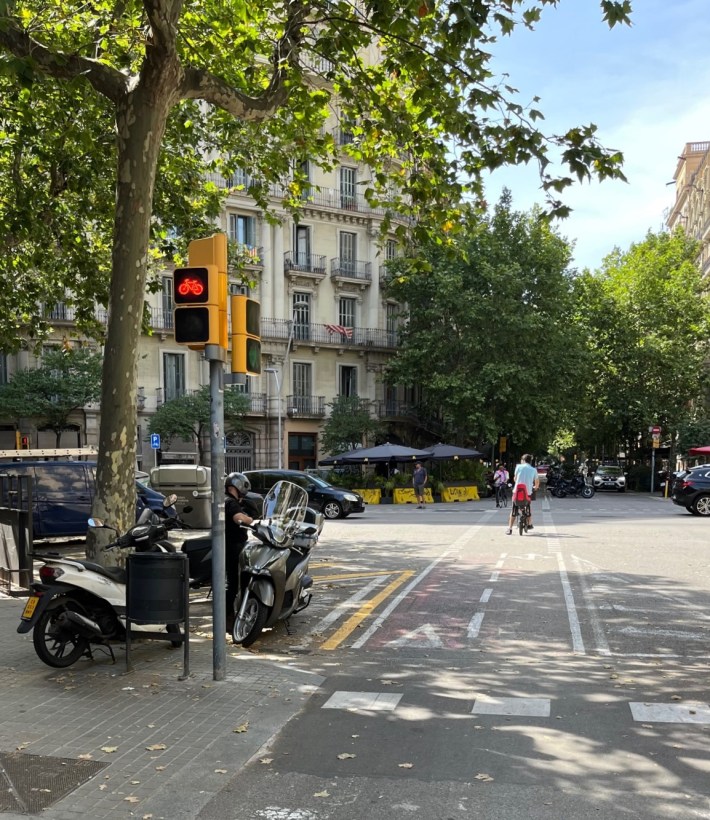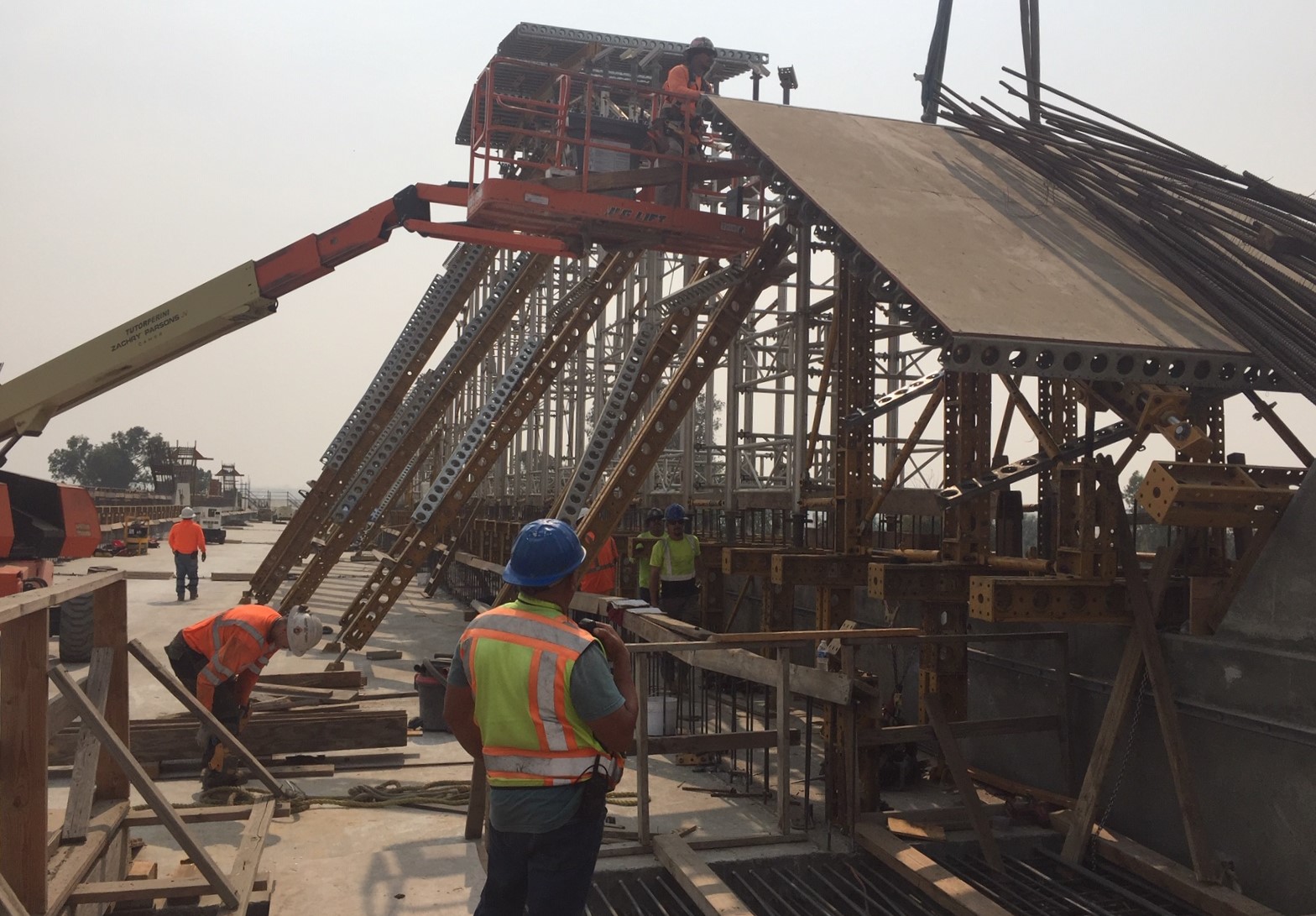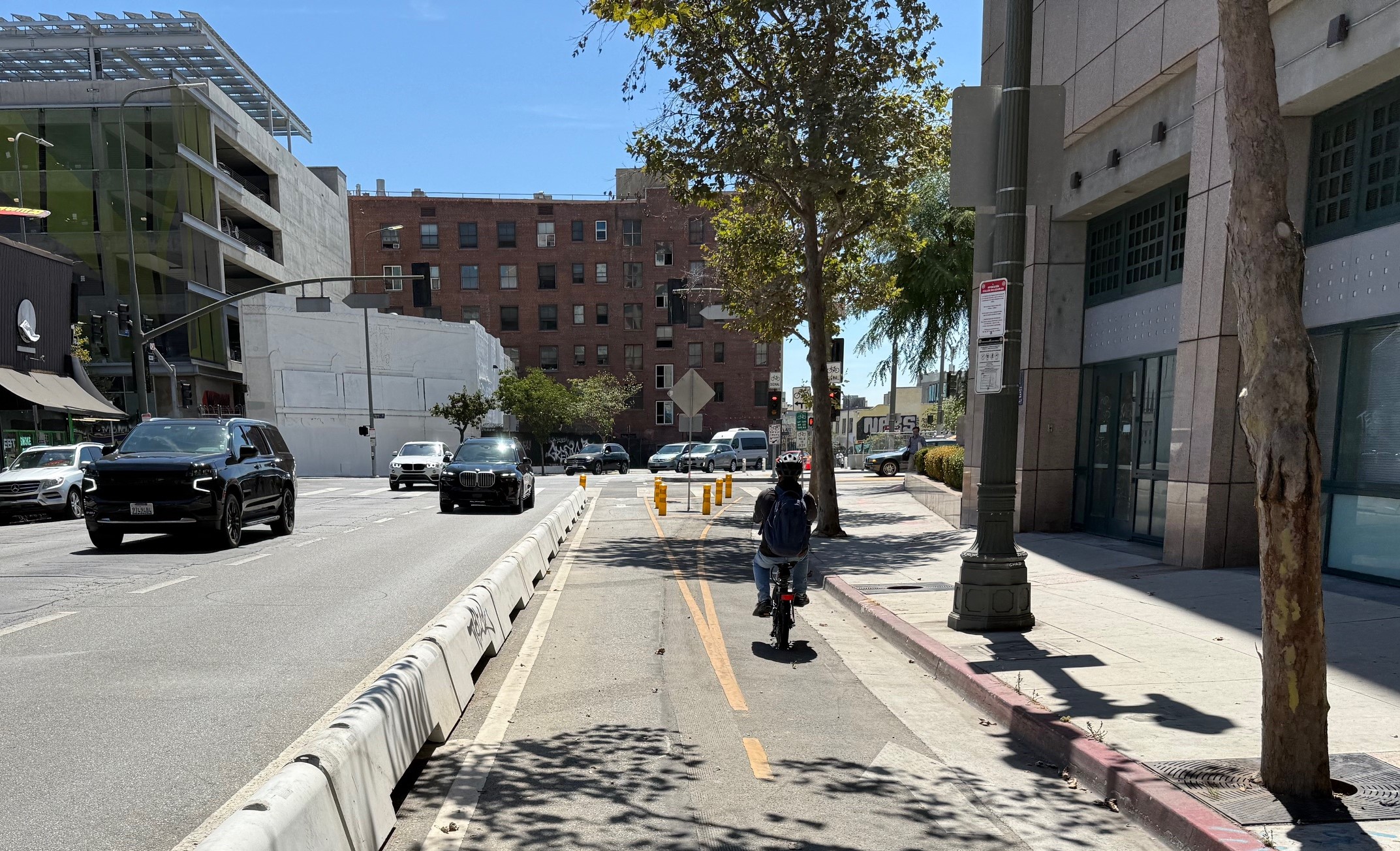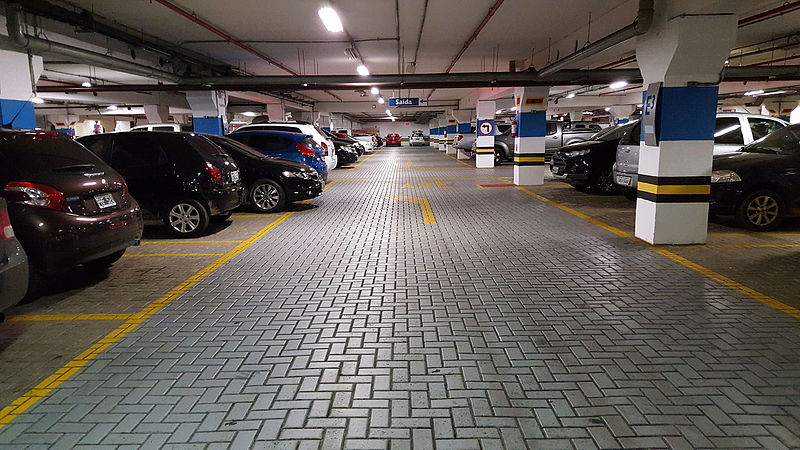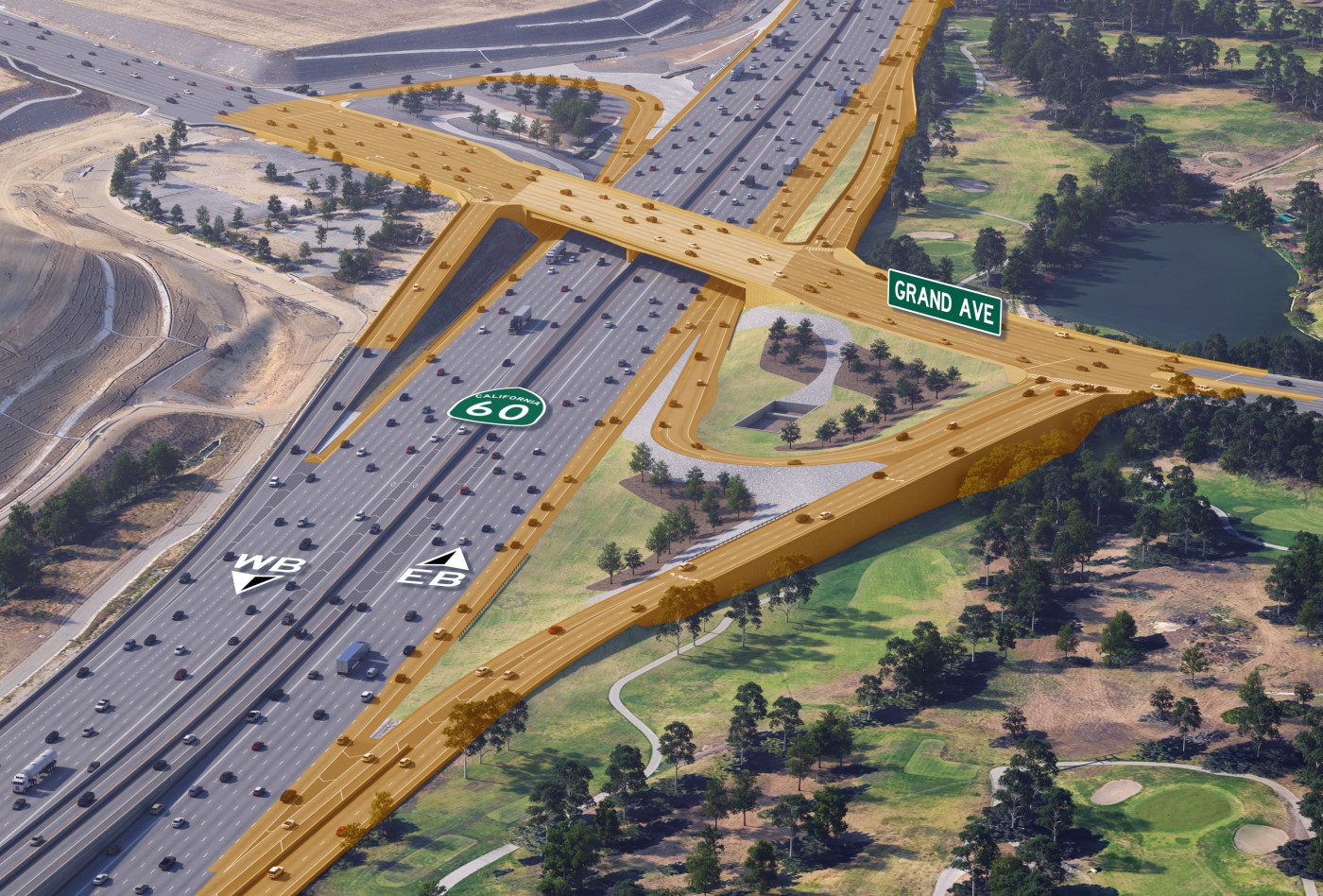Last month, my family and I vacationed for a week in Barcelona. I don’t claim to be an expert on Barcelona, but moving through the city I observed various things that I think might be interesting to SBLA readers. This piece is not an attempt to compile a comprehensive survey of best practices from Barcelona, but just some observations that might be applicable to improving Southern California transportation-wise. If you're interested, check out my earlier similar posts exploring Italian and Mexican cities.
Barcelona is the most walkable, most transit-oriented, and most bikeable place I've ever been to.
As with many places around the world, Barcelona is quite a bit more compact than Los Angeles. Barcelona has a population of 1.6 million, in an urbanized area home to around 4.8 million people. For comparison, L.A. City has about 4 million, and the greater urbanized area here about 12 million. Barcelona's 1.6 million residents live in a 39-square-mile area (roughly 8 miles by 5 miles - about half the size of Long Beach), giving it a population density around 41,000 people per square mile. In contrast, the city of Los Angeles' 4 million residents are spread over 469 square miles, with a density around 8,500 people per square mile.
We spent time in the most touristy areas closer to the coast, which are mostly very flat. The city gets somewhat hillier inland.
Below are my observations:
Putting Pedestrians in the Center of the Street: Ramblas and the Like
Barcelona has a street type that I didn't expect could work as well as it does - and it works phenomenally well there. Many Barcelona streets feature a wide pedestrian area in the central median. Most I saw appear to be around 30 to 50 feet wide (some even wider) right in the middle of the street! The central walk areas are tree-lined, and often have benches, vendors, outdoor seating areas, transit stops, mini-parks, public art, etc.

These broad walk streets are not the most common street type in Barcelona, but are more the landmark streets here and there. They aren't out-of-the-way walk paths (like places where many Angelenos drive to walk: Silver Lake Reservoir or Culver City Baldwin Hills Scenic Overlook stairs) either; Barcelona's walk streets are typically the main popular commercial/retail streets for their neighborhood.
The walk street configurations vary quite a bit; many of these broad walk areas are flanked by relatively narrow one-way car lanes. Cars are allowed on the street, but are kept to a fairly narrow marginal space along the edges. Pedestrians easily cross the single narrow car lane to get to shops along the street. Some of these streets are flanked by light rail, some by bike lanes, some by a couple car lanes.
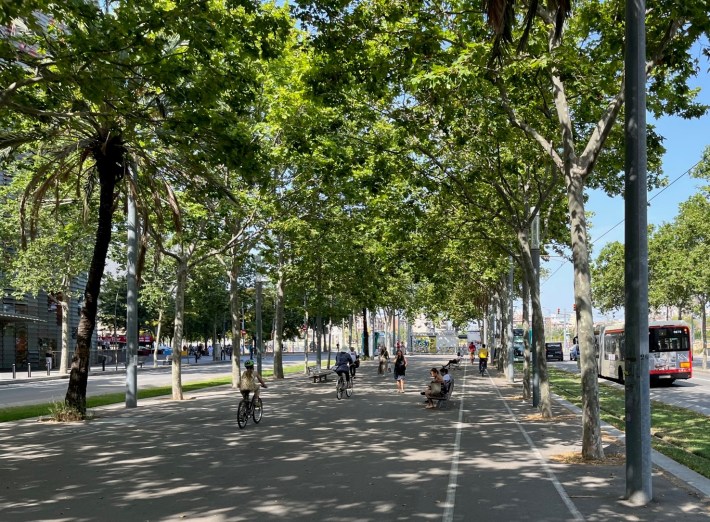
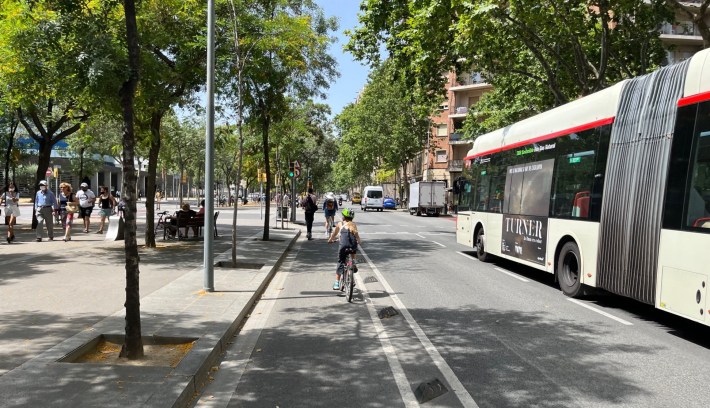
Many of these wide pedestrian priority streets are called "ramblas." There is the main La Rambla - the most prominent street in the older part of the city - and also various smaller ramblas in neighborhoods.
We stayed very near the Rambla del Poblenou, one of the smaller neighborhood ramblas. Our stretch of the Rambla del Poblenou featured a ~30-foot wide walk median flanked by two one-way bike lanes. No cars.
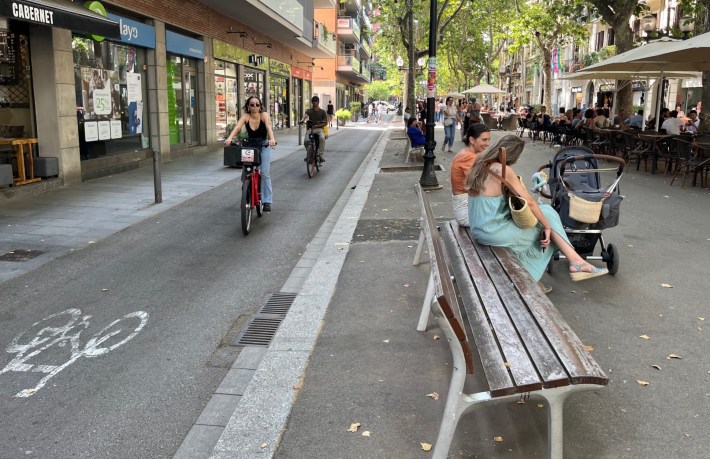
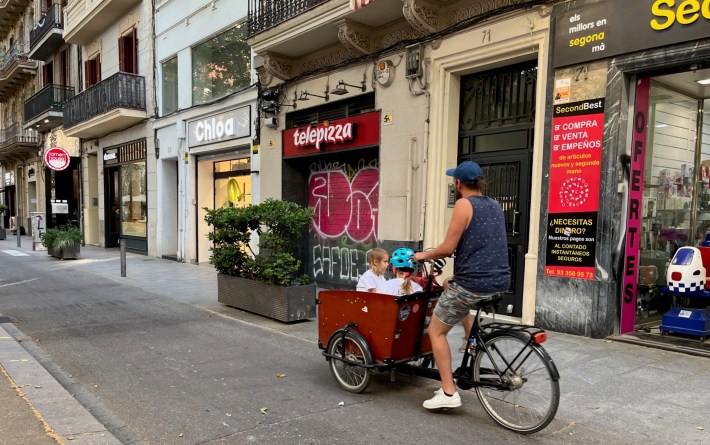
Extensive Transit Networks
We got around mostly by bicycle, but on our first day in Barcelona, we had a positive experience just getting around via the subway and walking.
Barcelona's transit system is ridiculously extensive. There are about a dozen subway lines, plus light rail, frequent buses, many running in bus lanes.
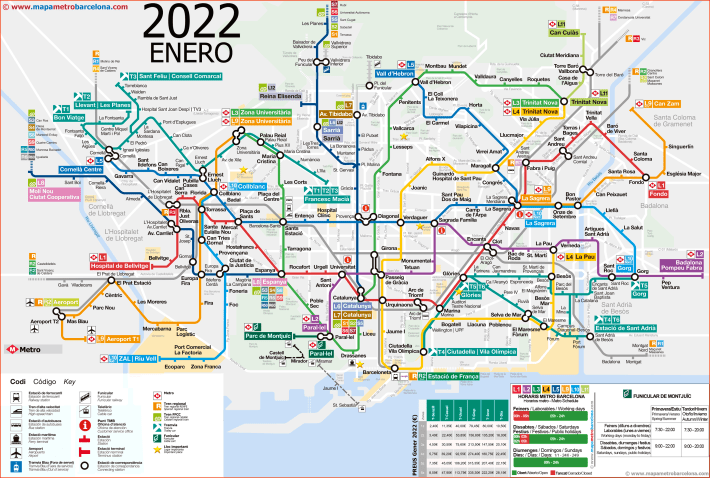
Trains arrived very frequently, making transfers very easy.
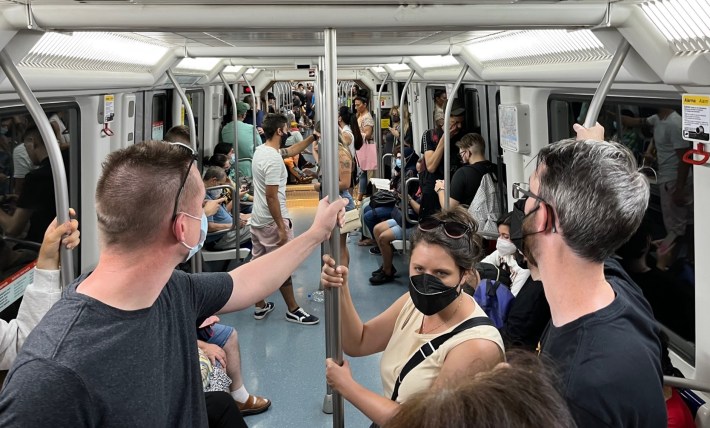
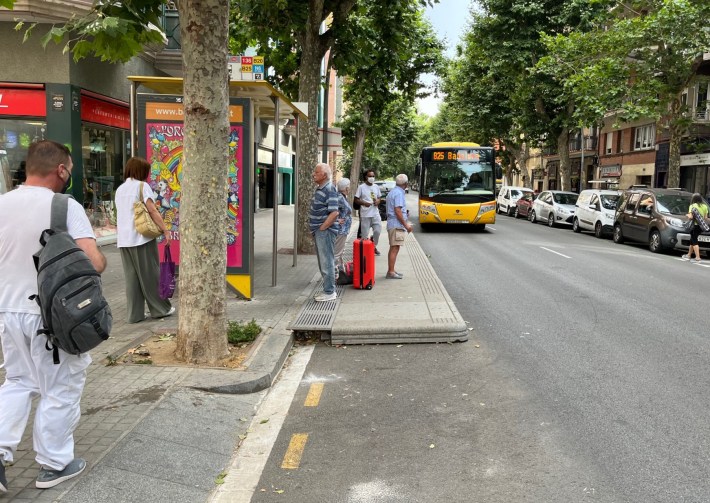
Extensive Bikeway Network
On our second day in town, my wife, 8-year-old daughter, and I rented bicycles. We initially rented them for a day, figuring that we would just explore a bit. After just a day, we were convinced that bikes made the most sense for us, so we extended the rentals for our entire stay. (If you're in the Poblenou neighborhood, I can recommend renting at Bike to Deliver, though there are quite a few bike rental places, as well as lots of city bike-share bikes available.)
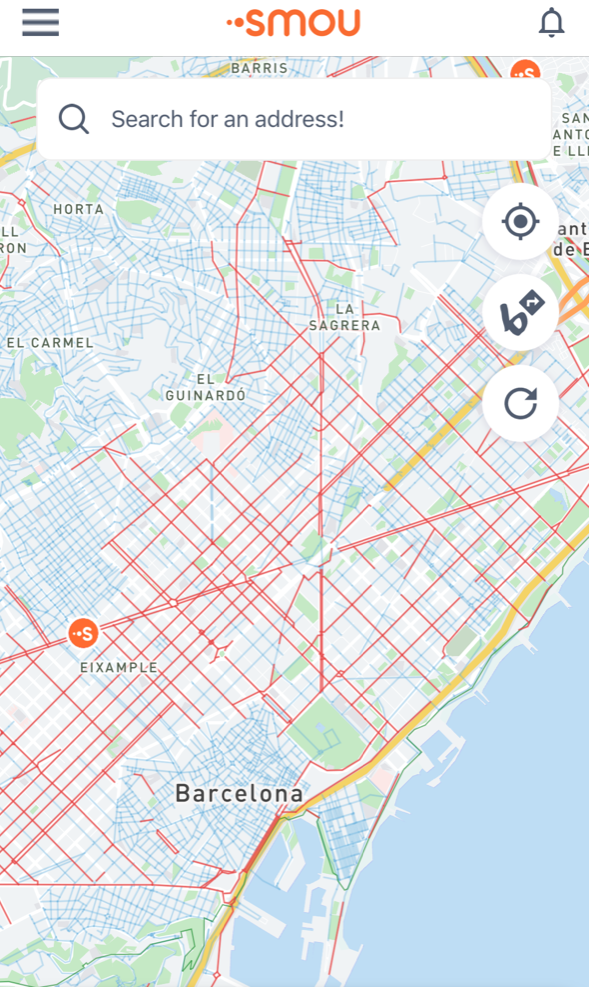
The city has implemented a protected bike lane network that extends through nearly all of the flatter area within 2-3 miles of the coast. The exception to this is the oldest part of the city - the Gothic Quarter - which is even more bikable, as it's mostly narrow car-free streets shared by pedestrians and slow-moving cyclists. These very old streets don't support a cyclist racing through at 20+ miles per hour, but work really well for intermittent cyclists who slow down and maneuver among pedestrians.
We found we could get most tourist destinations (beach, restaurants, shopping, Gaudi buildings, etc.) easily, quickly, and safely by bike.
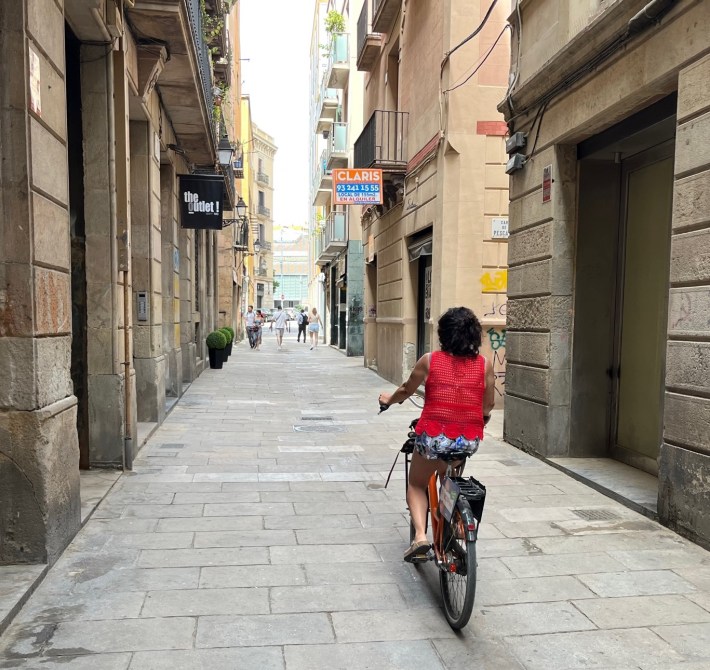
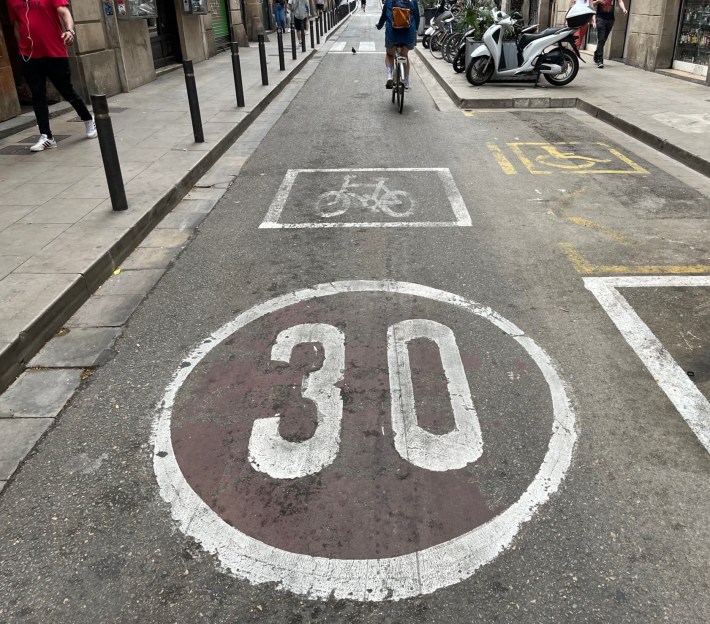
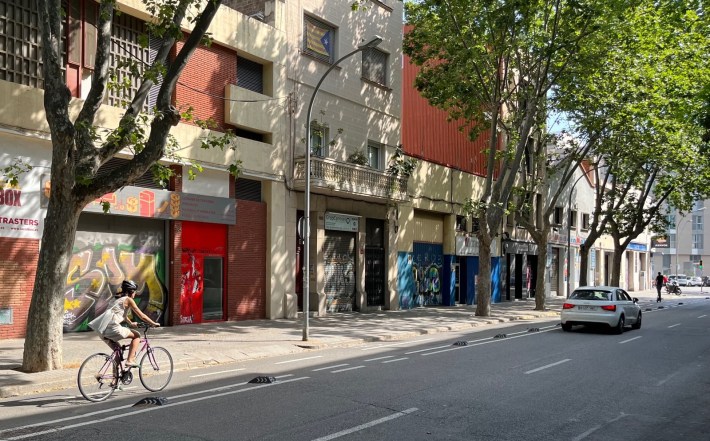
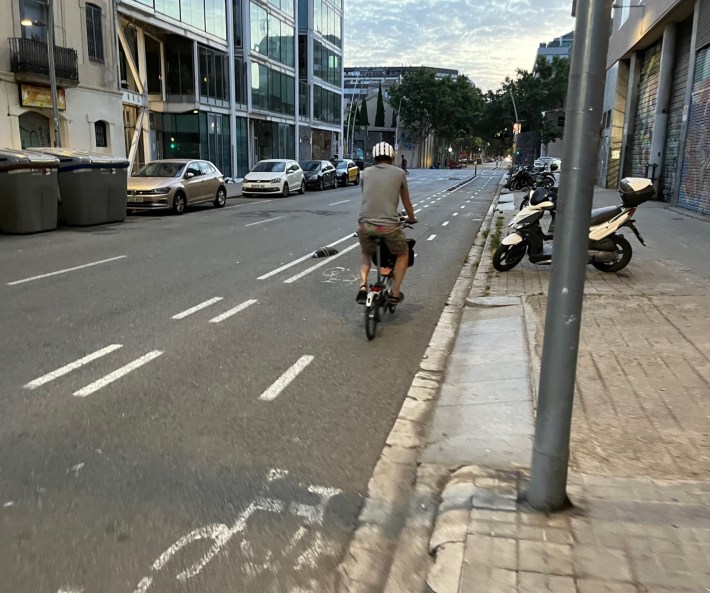

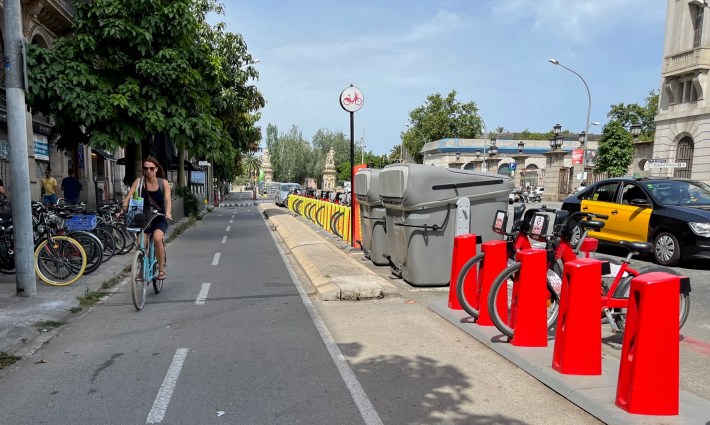
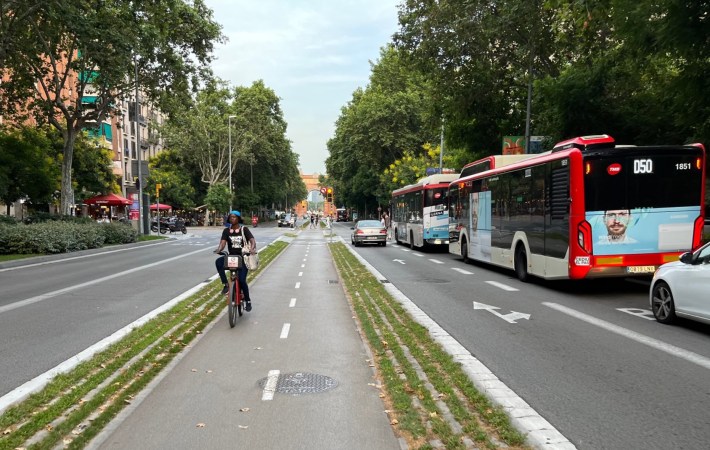
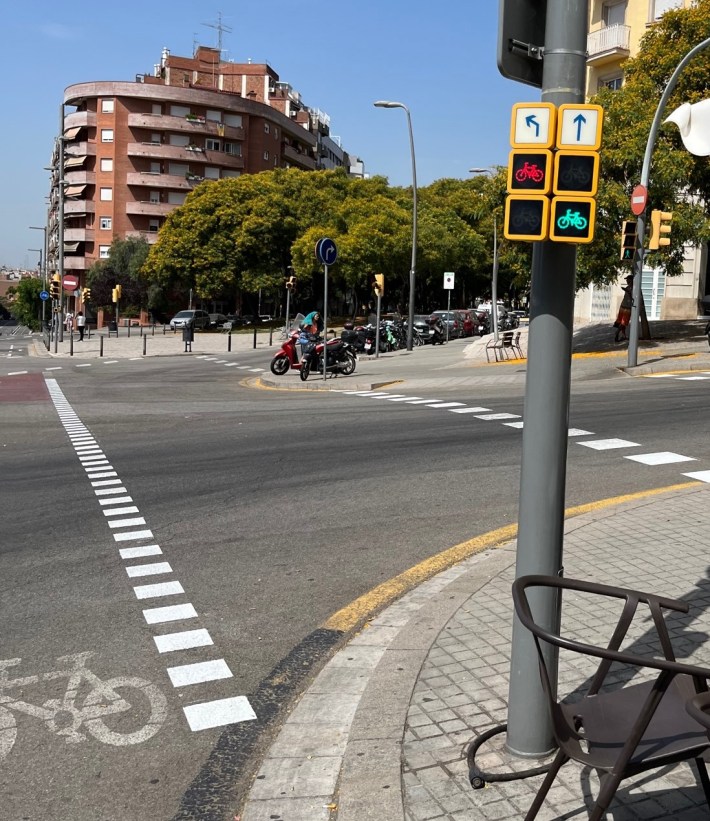
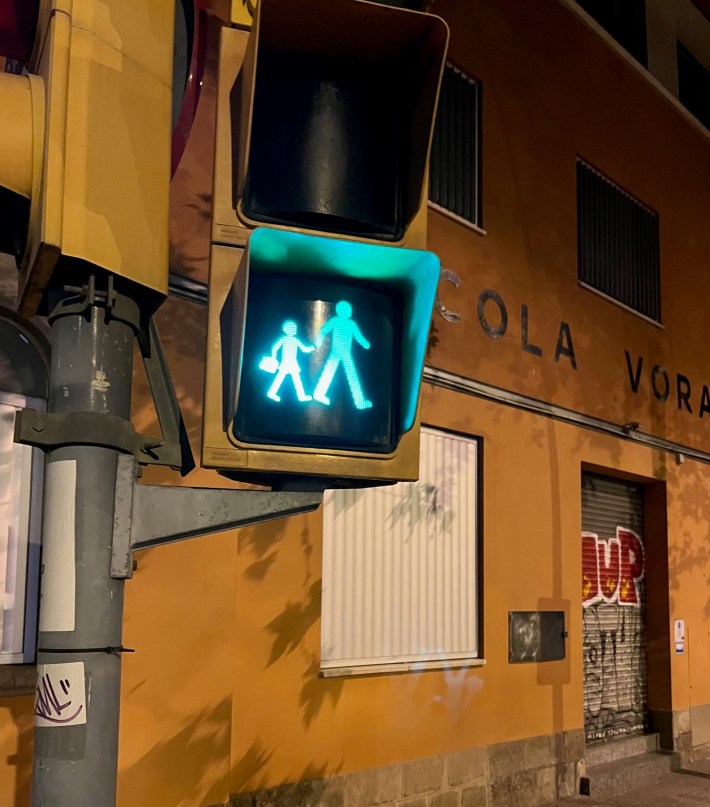
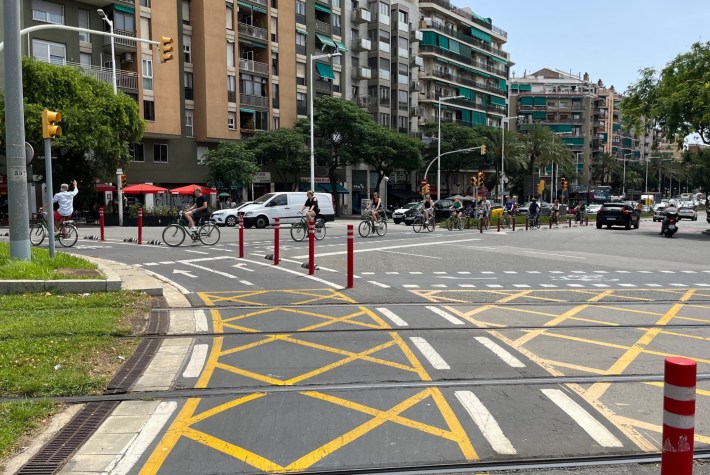
Superblocks
In the last half-decade, Barcelona has been implementing a new livability feature called a "superilla" or "superblock." Superblocks feature quick-build tactical-urbanism improvements to further limit where drivers can go, hence decreasing cut-through traffic and making the already walkable city even better for walking and bicycling. For the most part, car traffic is shunted to outskirts of the nine-block area. Drivers can access most of the inside of the superblock, but in many places are diverted from cutting directly through it.
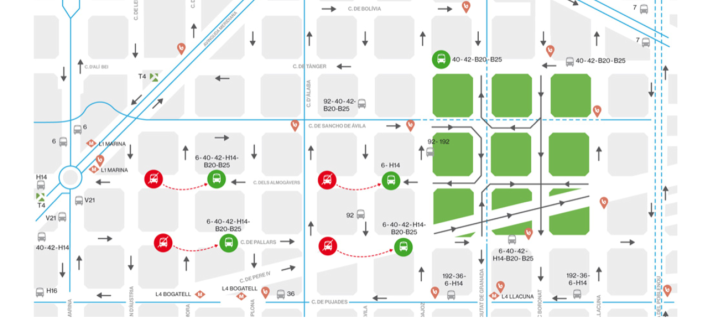
Apologies that I only briefly checked out the Poblenou Superilla - the city's first superblock. One morning, we biked through it to get to our destination. My anecdotal observation is that is was definitely a traffic-calmed space, but (at least at the point we briefly experienced it) less activated than the ramblas and similar pedestrian priority streets described above.
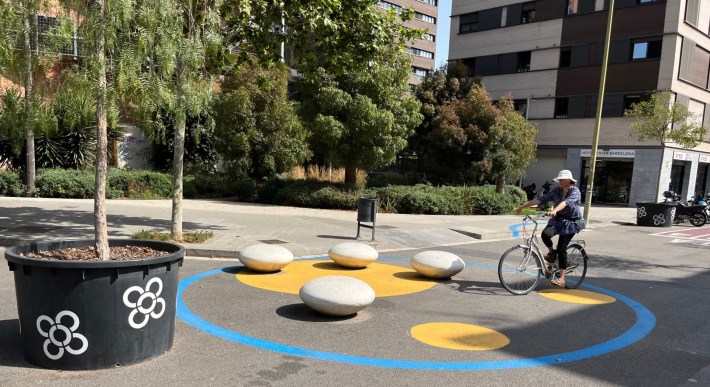
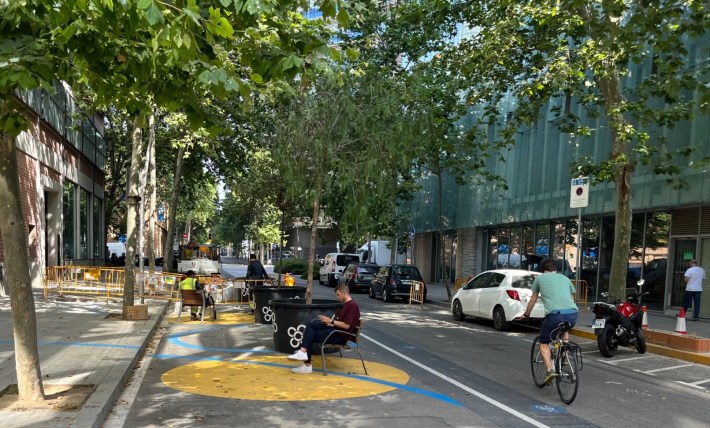
Barcelona's food, architecture, beaches, museums, shops are all great too - but that's another story.
